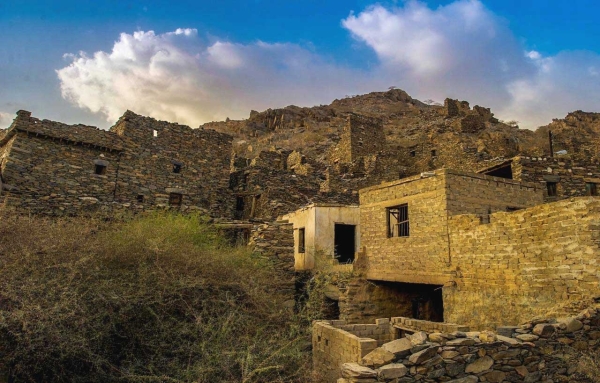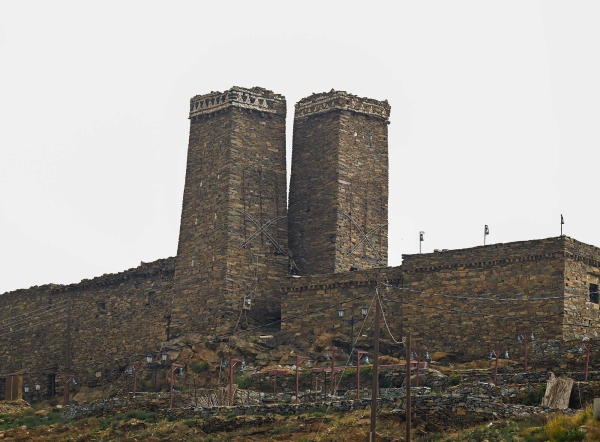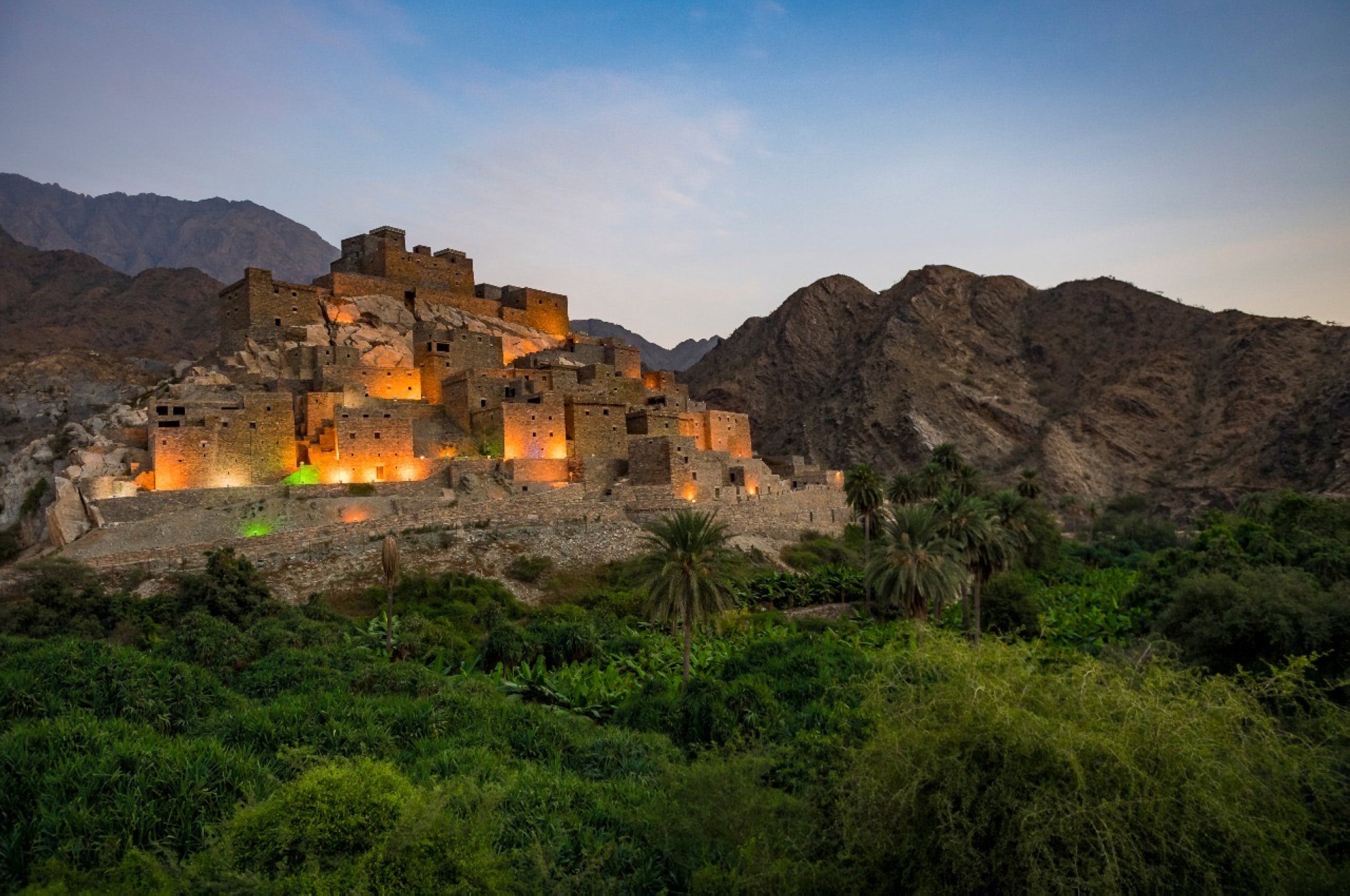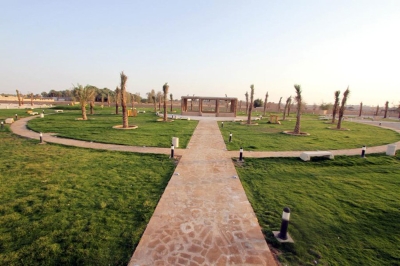


Antiquities in al-Bahah Province are the tangible remains and legacies of ancient human civilizations in al-Bahah Province, southwest of the Kingdom of Saudi Arabia. The province contains the ruins of old civilizations, some of which date back to the Paleolithic era, the Neolithic era, the pre-Islamic era, and the Islamic era.
Prehistoric era antiquities
The antiquities dating back to the Stone Ages in al-Bahah Province are distributed across three sites:
- Bani Kabir Site, comprising granite stone heaps, rock engravings depicting human and animal figures, architectural remains, and stone tools dating back to 2000 BCE.
- Abi al-Husain Plateau Site, containing a granite rock with incised engravings and various-sized stone circles nearby.
- Al-Qarah Site, dating back to the third millennium BCE. It features rock art of various animals and architectural remnants of different-sized units.
Pre-Islamic era antiquities
During the pre-Islamic era, al-Bahah Province witnessed a dense population, as evidenced by mountain terraces built on hill slopes for cultivation, accompanied by well digging, canal cutting, and diversion of floods towards al-Asdar region sloping towards the western coast. Among the cultural evidences of this period are:
- Wadi al-Akhiyyah Site, consisting of architectural remnants, including tombs on a high plateau.
- Luqman Village Site, comprising engravings and inscriptions in unknown letters on a granite stone, possibly Old South Arabian script but poorly executed.
- Al-Mataha Site in Bani Kabir, containing rocks on an elevated area with various inscriptions and writings, including human and animal figures.
- Bani Kabir Site, comprising fifteen inscriptions and stone heaps, with animal figures carved on one of them.

Islamic era antiquities
Al-Bahah Province houses sites of Islamic antiquities, due to its location on the route of trade and Hajj caravans from southern Arabia, in addition to other sites built near mining areas. The Islamic archaeological landmarks were classified into:
- Hajj Routes: Three ancient land Hajj routes pass through al-Bahah Province, which are the Upper Yamani Hajj route "al-Najdi," the Yamani Hajj route "al-Sarwi," the ancient Yamani Hajj route "al-Sudr," and the ancient trade route.
- Fortified villages: Al-Bahah Province encompasses many fortified villages on plateaus, mountain slopes, and valley banks. Their layout is characterized by simplicity, featuring narrow streets, passages, closely spaced buildings, and central courtyards serving as gathering points. Local stones and wood were used in construction. Within some of the villages, there are towers and fortresses, including al-Muld Village, housing two conical towers for surveillance and the twin fortresses of al-Akhawin, built symmetrically in size, structure, and interior design; al-Mikhwah Village, hosting architectural remains of a large village; and Thee Ain Village, comprising thirty-one houses and a small mosque dating back to the end of the eighteenth century, making it over four hundred years old according to UNESCO.
- Huts "Ishash" (Nests): Huts represent a building style in the western part of al-Bahah Province, known as "Tihama." They are weakly built, and their ruins rarely remain. The existence of this type of settlement is evidenced by the cemeteries that were found near them, such as the village and cemetery of Masouda and other cemeteries in the area.
- Mining villages and hamlets: These industrial hamlets emerged near mining mines in the eastern and western parts of the province, eventually expanding into large villages, such as the town of "Laghba" and the site of Asham. All of them contain mining mines, filtration and purification places, and mining tools such as "ar-Rahiyyah" (plural of Ruha) and "Masaheq", which are variously shaped and sized stone grinding mills scattered with melted metallic remains called "al-Khubath."
- Islamic inscriptions and engravings: Early and late Islamic inscriptions and engravings are scattered throughout al-Bahah Province. They are confined to testimonial engravings in Asham, Masouda, and al-Ahsaba (al-Asda'a). There are also Kufic script rock engravings at various sites, including as-Sanah and Aysan sites, foundational engravings in Asham and Ma’ashouqah, and milestone stone engravings found only at as-Salim Site along the Upper Yamani Hajj route in Harrat al-Baqum.
Al-Bahah Province urban heritage
Al-Bahah Province is distinguished by its historical and archaeological fortresses, where tall towers constructed of stone rubble are scattered, estimated to be around four thousand towers. Some of these towers date back to the local emirates that governed the area. They were used for the protection and storage of crops, safeguarding them from weather conditions and animal attacks. Additionally, these towers served as warehouses for agricultural tools and equipment.
The historical sites of al-Khalaf and al-Khalif in the Qilwah Governorate of al-Bahah Province date back to the early ninth century. These two adjacent towns are separated by two km and contain houses, remnants of mosques, graves, and other archaeological remains. Some of these structures have been reconstructed to preserve the Kufic inscriptions engraved on them, dating from the first half of the ninth century to the mid-eleventh century.
Archaeological exhibitions in al-Bahah museums
The province houses many museums that display the history and antiquities of the province, including al-Bahah Regional Museum, which was designed in an architectural style that combines modern construction with the stone urban heritage for which al-Bahah Province is renowned. It covers an area of nine thousand m at a total cost of about SAR50 million. The building comprises four floors divided into eight exhibition halls. The museum displays manuscripts, inscriptions, and Islamic engravings on frames or stones. Among the exhibited artifacts are fossils and ancient tools dating back to the Stone Age, with some artifacts estimated to date back to 3,500 BCE.
Related quizzes
Related articles
